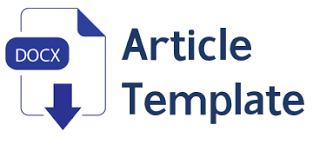EFEKTIVITAS PENGGUNAAN METODE RHYTHM SYLLABLES DALAM PEMBELAJARAN SENI MUSIK UNTUK SISWA KELAS 4 DI SD MUHAMMADIYAH SAPEN YOGYAKARTA
Abstract
Penerapan metode rhythm syllables pada pembelajaran seni musik untuk kelas 4 di SD Muhammadiyah Sapen ini dilaksanakan untuk mengetahui keefektifan metode tersebut sebagai upaya meningkatkan pemahaman siswa dalam pembelajaran ritmis. Metode penelitian yang digunakan dalam penelitian ini adalah metode kuantitatif eksperimen. Metode penelitian kuantitatif eksperimen ini membutuhkan dua jenis sampel yang didapat dari kelompok eksperimen dan kelompok kontrol. Penelitian ini menggunakan pre-test dan post-test sebagai instrumen pengumpulan data, dan menggunakan program SPSS (Statistical Program for Social Science) sebagai alat untuk analisis data. Dari hasil uji analisis yang telah dilakukan, dapat diketahui bahwa nilai rata-rata post-test kelas eksperimen yang diberikan pembelajaran ritmis menggunakan metode rhythm syllables lebih unggul 9,286 dibandingkan kelas kontrol dan peningkatan tersebut juga terbukti signifikan dengan nilai sig 0,032<0,05. Siswa yang diajarkan menggunakan metode rhythm syllables ini juga dapat memainkan pola ritmis dengan baik dan tepat. Dari hasil tersebut, dapat disimpulkan bahwa penggunaan metode rhythm syllables dalam pembelajaran seni musik ini efektif untuk diajarkan.
The Effectiveness of Rhythm Syllables Method in Learning Music for Grade 4 Students at Muhammadiyah Sapen Elementary School
The application of the rhythm syllables method in learning music for grade 4 at Muhammadiyah Sapen Elementary School to determine the effectiveness of the technique in increasing students’ understanding of rhythmic learning. The research method used in this research is a quantitative experimental method. This research method requires two types of samples: experimental and control groups. This research uses pre-tests and post-tests as research instruments to collect the data. It uses the SPSS (Statistical Program for Social Science) program as a tool for data analysis. From the results of the analysis tests that have been carried out, it can be seen that the post-test average of the experimental class who learn rhythmic with rhythm syllables is 9,286 higher than the control class. This increase has also been significant, with a value of 0,032<0,05. Students who learn rhythmic using the rhythm syllables method can also play rhythmic patterns correctly and precisely. From thesee results, it can be concluded thatusingf the rhythm syllables method in learning music is effective for teaching.
Full Text:
PDFReferences
Antonio D. Griffin Jr. (2021). Elementery Rhythm Pedagogy Analysis.
Arsyad, A. (2015). Media Pembelajaran. Raja Grafindo Persada.
Cindy, C. (2020). Penerapan Metode Rhythm syllables Kodaly Pada Kemampuan Ritme Musik Siswa Kelas VI SD di Sekolah Umum Surya Bangsa. Journal of Research in Music Education. Universitas Pelita Harapan.
Djaali. (2022). Metodologi Penelitian Kuantitatif. Bumi Aksara.
Fust, T. R. (2016). Syllable systems : four students ’ experiences in learning rhythm. ThinkIR : The University of Louisville ’ s Institutional Repository.
Gordon, E. (1993). Learning Sequences in Music. GIA Publication.
Santrock, J. W. (2011). Life-Span Development. Erlangga.
DOI: https://doi.org/10.24821/idea.v17i2.10029
DOI (PDF): https://doi.org/10.24821/idea.v17i2.10029.g3324
Refbacks
- There are currently no refbacks.
___________________________________________________________
IDEA: Jurnal Ilmiah Seni Pertunjukan
ISSN 1411-6472
Published by Institut Seni Indonesia Yogyakarta
Website: https://journal.isi.ac.id/index.php/IDEA



